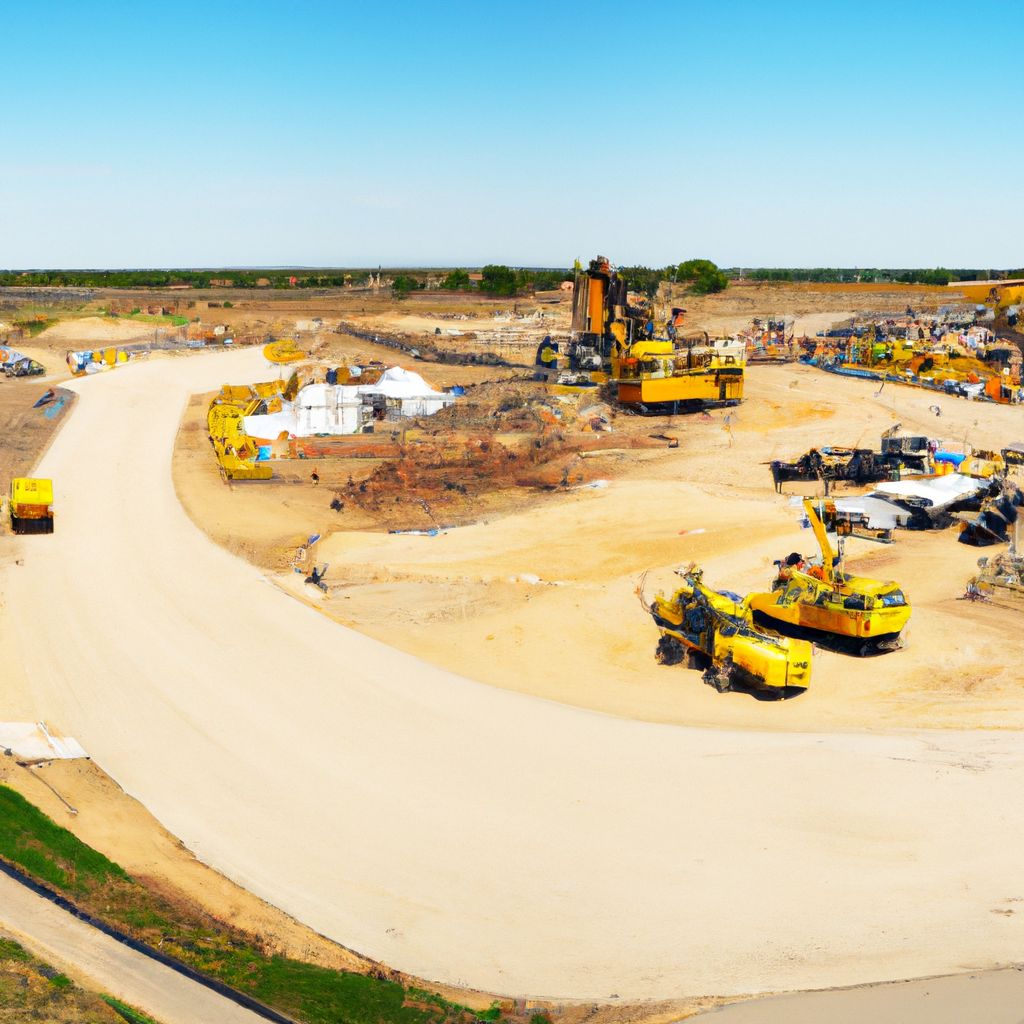Key takeaways:
- A successful supply strategy is crucial for construction projects as it ensures timely availability of materials and equipment, ultimately leading to project success.
- Implementing a successful supply strategy offers numerous benefits, including improved project efficiency, cost savings, reduced downtime, and enhanced collaboration with suppliers and contractors.
- To formulate a successful supply strategy, it is important to assess project requirements, evaluate suppliers and contractors, effectively manage the supply chain process, mitigate supply chain risks, leverage technology for supply strategy, ensure continuous improvement, and stay updated with future trends and innovations in construction supply strategies.
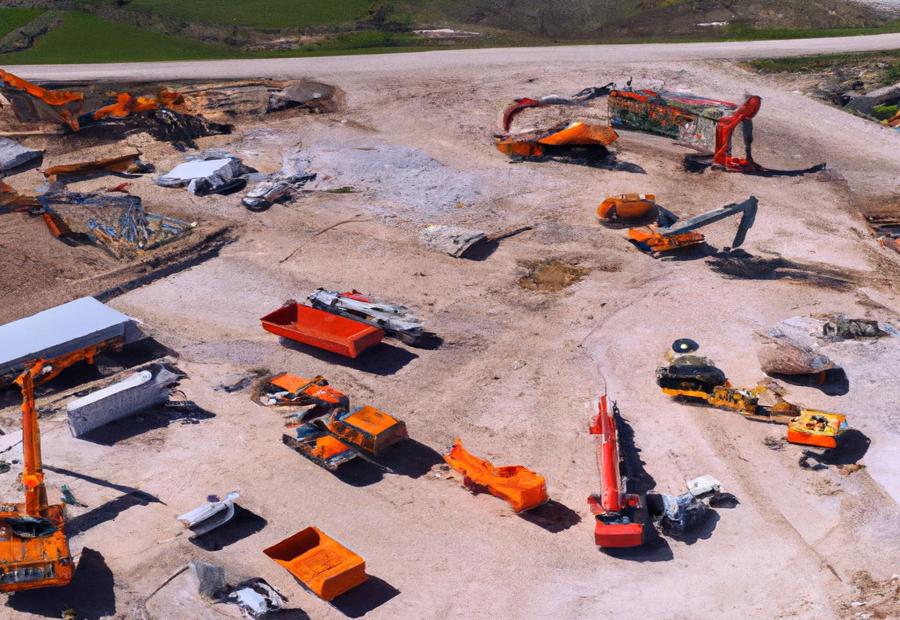


Photo Credits: Build-Wire.Com by Timothy Davis
Having a strong supply strategy is crucial for the success of any construction project. In this section, we will explore the importance of a well-formulated supply strategy and the benefits it can bring. By understanding the significance of a strategic approach to sourcing and procurement in construction, you can ensure efficient material management, timely delivery, cost savings, and overall project success. Let’s dive in and discover how a successful supply strategy can make all the difference in your construction project.
Importance of Supply Strategy in Construction Projects
A successful supply strategy is essential for the success of construction projects. It ensures that materials and equipment arrive on time, in the right quantity and quality. This eliminates delays and keeps projects on schedule and within budget. It also helps with cost management by getting materials from reliable suppliers at optimal prices.
To create an effective supply strategy, project requirements must be assessed. This includes identifying which materials and equipment are needed, and their quantity and quality. This avoids unnecessary expenses or shortages.
Evaluating suppliers and contractors is also important. Research should be done to find trustworthy suppliers who always provide good materials within deadlines. Establishing long-term partnerships with these suppliers reduces the risk of delays or disruptions. Negotiating contracts and pricing helps gain favorable terms for both parties.
Managing the supply chain is vital for efficient workflow in construction projects. This includes a detailed supply chain plan, and implementing logistic and delivery systems. This ensures prompt transportation of materials to the project site.
Risks and challenges associated with the supply chain process must also be considered. These may include price fluctuations, supplier non-compliance, and logistical constraints. Contingency plans should be created to handle any unforeseen circumstances. Monitoring the supply chain process regularly allows for proactive adjustments when needed.
Leveraging technology improves supply strategy in construction projects. Digital inventory management solutions enable real-time tracking of materials. Software applications streamline communication between teams and suppliers.
Continuous improvement is key to a successful supply strategy. Collecting and analyzing data for performance evaluation provides insights. Learning from past experiences and projects helps identify areas of improvement.
If your supply strategy is on point, you’ll be building bridges faster than your competition!
Benefits of a Successful Supply Strategy
A fruitful supply scheme in construction projects grants many perks. To start with, it assures the presence of materials and gear required for the project, diminishing delays and disturbances. This is critical for meeting project deadlines and milestones.
Additionally, a well-executed supply scheme aids in deciding the amount and quality necessities, guaranteeing that the project is finished to the preferred levels. This allows for accurate resource allotment and prevents needless costs.
Moreover, a diligently plotted supply scheme enables efficient logistic and delivery systems. This implies that materials and equipment can be sent to the construction site promptly, without any obstacles. It ensures that there are no hold-ups in the construction process due to logistical issues.
Furthermore, an intelligently thought-out supply scheme decreases supply chain risks. It accomplishes this by recognizing potential troubles and making contingency plans. By being proactive in managing risks, the project team can avoid pricey delays and complications.
Finally, using technology in supply scheme boosts inventory management and streamlines communication and collaboration among stakeholders. Through the usage of technology, the project team can monitor inventory levels and make informed decisions about procurement. It also facilitates smooth communication between suppliers, contractors, and other stakeholders involved in the construction project.
To sum up, a successful supply scheme in construction projects has several benefits. It guarantees the availability of materials and equipment, sets quantity and quality needs, enables effective logistic and delivery systems, diminishes supply chain risks, and employs technology for enhanced inventory management and communication. By evaluating and tackling project demands, the construction team can eliminate the doubt of not knowing what they need, and instead, achieve success through a well-thought-out and executed supply scheme.
Assessing Project Requirements
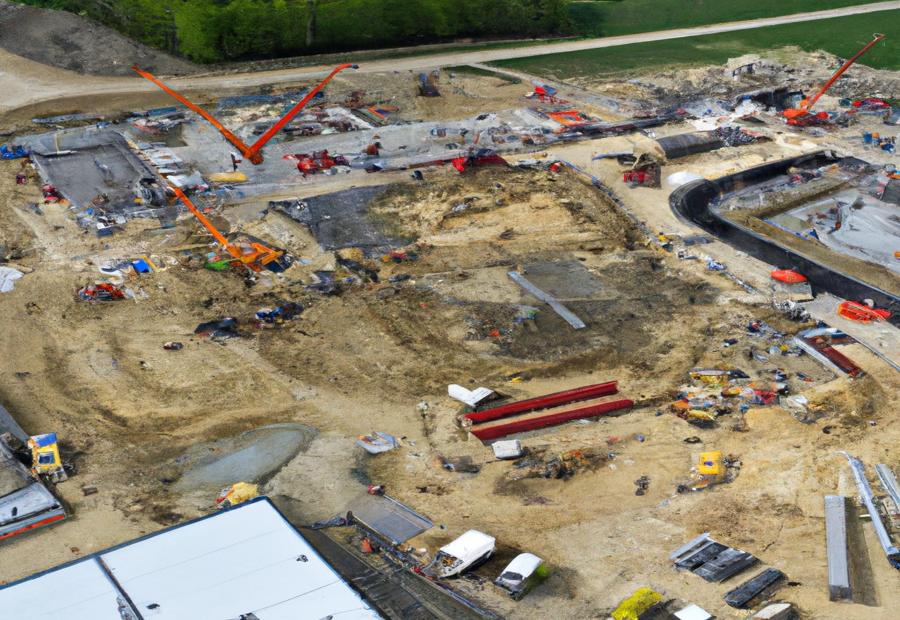


Photo Credits: Build-Wire.Com by Joseph Nguyen
Assessing project requirements is a crucial step in formulating a successful supply strategy for your construction project. In this section, we will explore the sub-sections of identifying materials and equipment needs, as well as determining the quantity and quality requirements. By understanding these essential aspects, you can ensure that your project is equipped with the necessary resources to meet its specific demands, leading to efficient and effective construction operations.
Identifying Materials and Equipment Needs
Identifying materials and equipment needs is crucial for successful construction projects. Project managers must determine precisely what materials and equipment are required for smooth operations. To do this, thorough analysis and assessment of the project’s scope, timeline, and specifications must be done.
By recognizing these needs, construction project managers can plan their procurement processes with ease. They must source suppliers who can provide the required items at the desired quality levels, quantities, and within the specified timelines. This ensures accurate budgeting and cost estimation. Moreover, it allows project managers to set realistic expectations before entering into negotiations or agreements.
Additionally, there may be unique factors or considerations to address. These can include specific industry regulations, specialized equipment requirements, or rare or scarce materials. It is essential to assess these aspects early on to avoid problems during the construction process.
A great example of the importance of accurately identifying materials and equipment needs is a large-scale infrastructure project. Initially, the project team underestimated the quantity of steel reinforcements needed, causing delays. This experience was a lesson, and future projects paid more attention to material needs. As a result, subsequent projects went ahead on schedule, avoiding unnecessary setbacks.
In conclusion, identifying materials and equipment needs is essential for successful construction projects. It allows project managers to plan procurement processes, set realistic expectations, and avoid unforeseen difficulties. By assessing these needs accurately, projects can proceed as planned and reach their goals.
Determining Quantity and Quality Requirements
To figure out quantity and quality demands, contractors must create a plan. This plan should include the project’s specs, timeline, and budget. Knowing these needs helps contractors get the resources they need quickly.
For quantity demands, contractors may search for industry standards or best practices. They can also look at past projects to see how much materials or equipment was needed. This way, they can make sure they have the right amount of supplies.
Quality requirements are important too. All materials and equipment must meet both regulatory standards and customer expectations. Technology solutions such as inventory management software can help with this. Good communication between contractors and suppliers, along with regular performance monitoring, also help.
Getting the right resources is key. It avoids delays or rework due to insufficient resources. This proactive approach minimizes risks and ensures successful projects. It’s like dating – you want reliability, commitment, and no hidden costs.
Evaluating Suppliers and Contractors
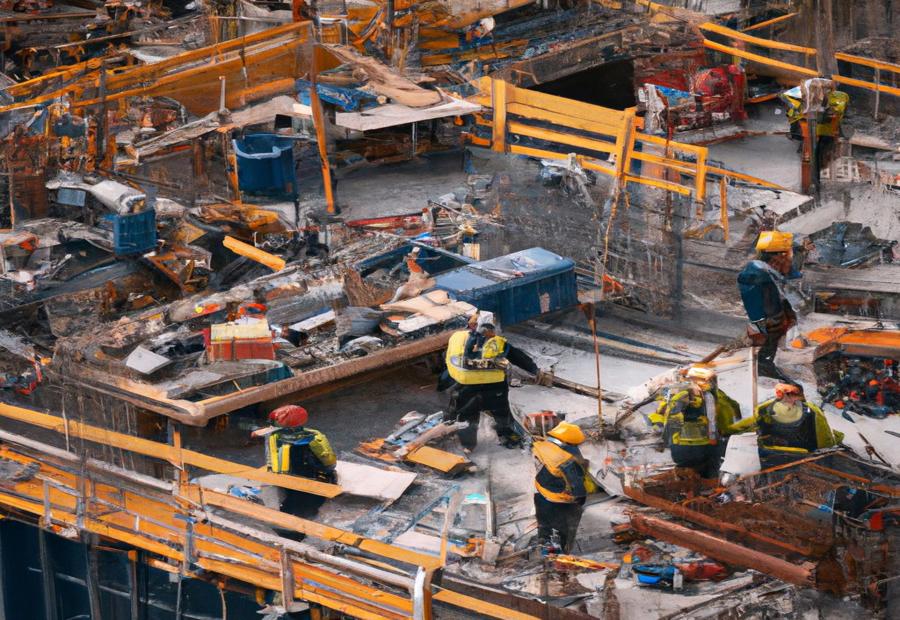


Photo Credits: Build-Wire.Com by Alan Allen
Evaluate and choose suppliers and contractors wisely to ensure a successful supply strategy for your construction project. Discover the importance of researching and selecting reliable suppliers, building long-term partnerships, and negotiating contracts and pricing for optimal project outcomes. Don’t settle for mediocrity when it comes to your supply chain – make informed decisions that will drive efficiency, reliability, and cost-effectiveness throughout your construction journey.
Researching and Selecting Reliable Suppliers
Researching and selecting dependable suppliers is key in creating a successful supply strategy for construction projects. To do this, perform thorough research to find potential suppliers who can meet the specific needs of the project. Consider their experience, reviews, and if they have worked on similar projects.
- Step 1: Discover Potential Suppliers
- Research different suppliers in the market who offer the materials or services needed.
- Look at their experience, reputation, and client reviews to assess their reliability and performance.
- See if they have expertise in providing materials or services for construction.
- Step 2: Test Supplier Reliability
- Review suppliers to see if they are suitable for the project.
- Evaluate factors like delivery timeframes, product quality, responsiveness to inquiries, and ability to meet quantity requirements.
- Get recommendations from industry professionals or colleagues who have worked with potential suppliers.
- Step 3: Make Partnerships
- Once reliable suppliers are identified, build long-term partnerships based on trust and mutual benefit.
- Develop relationships with the suppliers by communicating openly and having regular meetings.
- Negotiate contracts and pricing terms that are favorable for both parties, and be clear in all aspects of the partnership.
By researching and selecting reliable suppliers, construction projects can guarantee a steady supply of quality materials or services. This not only helps in meeting project requirements but also reduces the risk of delays or disruptions.
Pro Tip: Strengthen supplier relationships through open communication for increased collaboration, flexibility, and better overall performance.
Creating lasting relationships in construction is like finding a unicorn, rare and enchanting, but oh so rewarding.
Establishing Long-term Partnerships
Secure long-term partnerships: key to a successful supply strategy in construction projects. Select reliable suppliers/contractors and assess their capabilities. Have a formal agreement in place that outlines the terms and conditions. Maintain open communication channels to build trust. Negotiate contracts and pricing to achieve construction project success.
Negotiating Contracts and Pricing
To effectively negotiate contracts and pricing with suppliers and contractors, one must research and select reliable suppliers first. Evaluating their track record, reputability, and the project’s requirements will help in this process. Establishing long-term partnerships with them is also important. This involves building trustful relationships that provide competitive pricing arrangements and consistent access to quality materials and equipment.
The negotiation process itself consists of discussions on product specifications, delivery timelines, payment terms, warranties, and pricing structures. Skilled negotiators should look for win-win solutions that meet both parties’ needs and secure optimal value for money. Open communication, fair bargaining, and compromise are essential elements for a successful negotiation process.
By leveraging effective negotiation skills, construction companies can secure favorable contract terms that align with their project requirements. From planning to delivery, managing the supply chain process in construction requires timing, coordination, and the occasional surprise.
Managing the Supply Chain Process
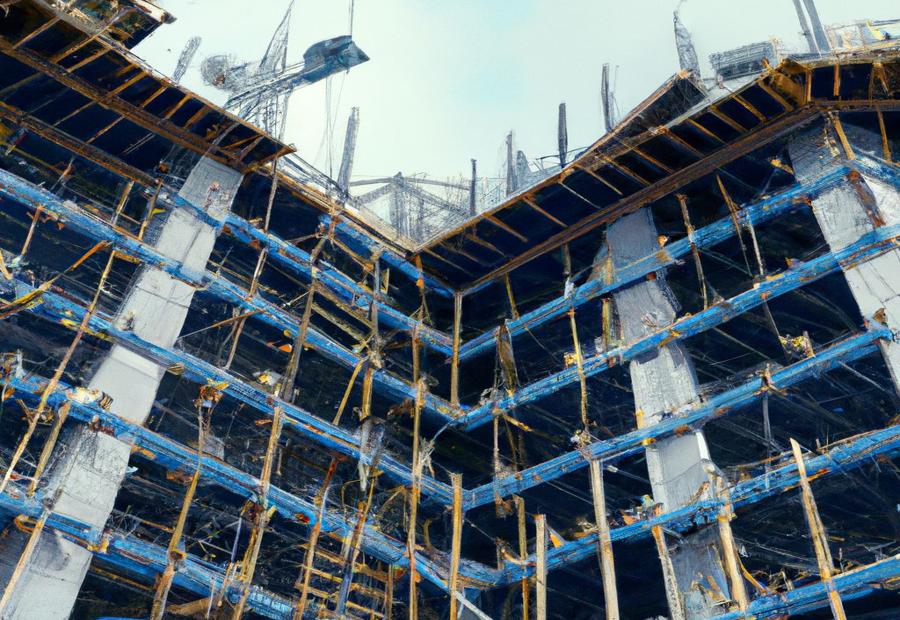


Photo Credits: Build-Wire.Com by Philip Baker
The supply chain process plays a crucial role in the success of any construction project. In this section, we will explore how to effectively manage this process by developing a detailed supply chain plan and implementing efficient logistic and delivery systems. By understanding the importance of a well-organized supply chain, construction professionals can ensure timely and cost-effective procurement of materials, minimizing project delays and maximizing overall efficiency.
Developing a Detailed Supply Chain Plan
- Assess Project Needs: Work out what materials and equipment are needed for the construction project. Take into consideration the quantity and quality requirements for the project.
- Evaluate Suppliers & Contractors: Choose reliable suppliers to form long-term partnerships. This will ensure a steady flow of quality materials and services.
- Negotiate Fees & Pricing: Review and agree on terms and conditions. Make sure the pricing is fair, and protect against potential conflicts.
- Manage the Supply Chain: Create a plan for managing the supply chain process. This includes setting a timeline, logistics, inventory management, and coordinating communication.
- Mitigate Supply Chain Risks: Identify potential risks and challenges in the chain. Create plans to address them proactively to reduce disruptions.
Additionally, assess past experiences and trends to improve future performance. Make the supply chain run like a machine for construction success.
Implementing Efficient Logistic and Delivery Systems
Construction companies need to create a comprehensive plan which highlights the logistics and delivery requirements for every stage of the project. This includes finding the best routes to transport, scheduling deliveries to avoid traffic, and collaborating with suppliers for timely material supply.
Technology can aid in inventory management. Digital systems can help monitor stock, automatically reorder when certain levels are reached, and predict material needs.
Software platforms are also helpful for communication and collaboration. They provide a central area to share info, work on schedules, observe deliveries, and solve issues quickly.
Warehouse systems are important for efficient logistics. Lean practices and just-in-time inventory methods can optimize space usage, reduce waste, minimize handling times, and improve operational efficiency.
Quality control during transportation is essential, since construction materials are vulnerable to damage. Packaging, secure loading procedures, and regular maintenance checks on vehicles can prevent potential losses.
Continuous monitoring and improvement are musts. Examining the performance of logistic and delivery systems helps identify areas for improvement. Analyzing data on delivery times, costs, and customer satisfaction helps make smart decisions.
For every project, unique details such as traffic conditions, weather impacts, and local regulations should be taken into account. This helps ensure the smooth flow of materials and equipment to the construction site.
Mitigating Supply Chain Risks
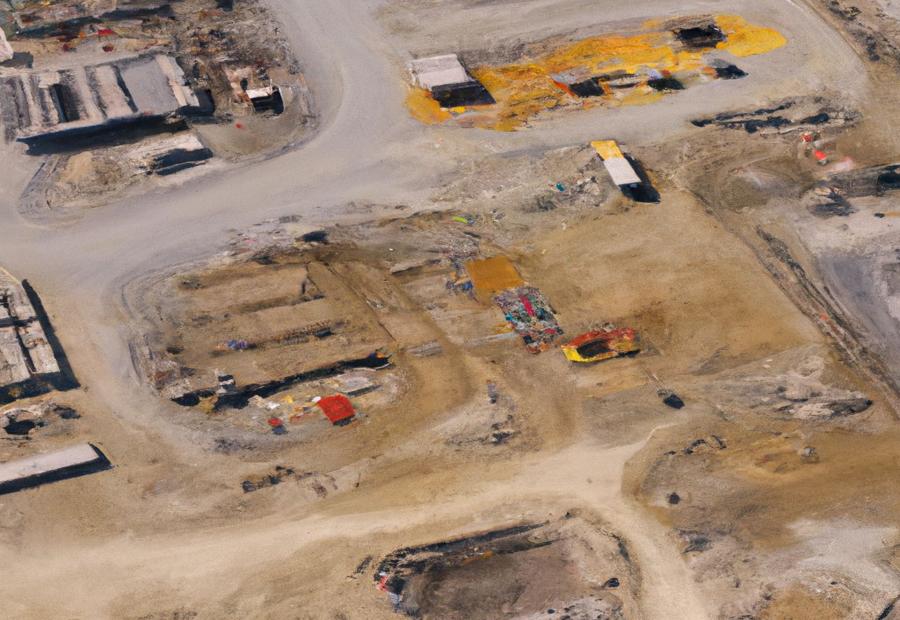


Photo Credits: Build-Wire.Com by Gary Lewis
Mitigating supply chain risks is crucial for the success of your construction project. In this section, we will delve into the sub-sections that will guide you in managing potential risks and challenges, creating contingency plans, and implementing regular monitoring and adaptation strategies. Prepare to enhance the efficiency and resilience of your supply chain with proven techniques backed by industry expertise.
Identifying Potential Risks and Challenges
Construction projects may confront a range of risks and challenges. These can have a major effect on the supply chain. To effectively supervise and reduce them, they must be recognized.
- Market changes: Variations in the market, such as price shifts or material availability, may be a threat to the supply chain. Detecting these potential risks allows for proactive measures, like finding different providers or adjusting the procurement strategy.
- Supplier dependability: Examining the dependability of suppliers is essential to avoid possible disruptions. Realizing any potential risks with suppliers, such as issues with quality or delivery postponements, makes it possible for construction projects to make wise decisions about supplier selection and contract negotiation.
- Logistic issues: Transportation and logistic challenges can affect the timeliness of material and equipment shipments. Noticing potential logistic constraints, like traffic jams or limited storage, helps in creating emergency plans to guarantee smooth operations.
- Environmental elements: Construction projects may have risks due to environmental elements, such as bad weather or natural disasters. Identifying these potential risks allows for appropriate measures to be put in place, such as insurance or safety protocols.
- Regulatory adherence: Following regulatory demands is important to prevent legal problems and fines. Identifying potential compliance issues, like changes in regulations or permits needed for certain materials, helps construction projects stay within legal borders.
- Labor lack: The presence of skilled labor can be a challenge in construction projects. Recognizing the risk of labor shortages allows for better workforce planning and management strategies, like coaching programs or collaborations with subcontractors.
Realizing and tackling these potential risks and challenges is essential for successful supply chain management in construction projects. By proactively identifying these risks, construction projects can set up effective emergency plans and reduce any disruptions to the supply chain process. It’s better to be prepared for a construction project doomsday than to be surprised by an undead attack!
Creating Contingency Plans
For a successful supply strategy for your construction project, plan for risks and challenges. Contingency plans are backup measures to use if unforeseen circumstances disrupt the supply chain.
- Assess risks: Analyze to find any risks and challenges that might happen during the project.
- Alternative solutions: Make contingency plans for alternate routes to take if disruptions occur.
- Allocate resources: Figure out what resources are needed for the contingency plans, such as more inventory or other suppliers.
- Communicate and collaborate: Build clear communication between suppliers and contractors to quickly implement the contingency plans if needed.
- Test and refine: Test and review the plans, making changes from previous experiences.
- Document and share: Keep detailed records of the plans and make sure everyone has access to them.
To make sure risk management is effective, put in place comprehensive contingency plans. This will help reduce disruptions and keep the supply chain running smoothly.
Pro Tip: Keep your plans flexible and update them based on changes. Anticipate risks and adjust strategies accordingly.
Keep an eagle eye on your supply chain – be ready to update and modify as needed to keep materials flowing.
Regular Monitoring and Adaptation
Regular monitoring and adapting are essential for a successful supply strategy in construction projects. Monitoring should include:
- Inventory to stop stockouts/overstocking
- Supplier performance for reliability/quality
- Delivery schedules for on-time arrivals
Adapting the supply chain plan based on changing project requirements or constraints is also necessary. Plus, regularly reviewing/updating contingency plans for potential risks, and using performance evaluation data to improve processes.
Adaptability ensures minimal disruption to the supply chain process. It also allows for quickly contracting an alternative supplier if needed. This keeps continuity in project execution. Monitoring and adapting are vital for smooth operation of the supply chain. Project managers can use this to identify risks, and take measures to ensure productivity and meeting objectives.
Leveraging Technology for Supply Strategy



Photo Credits: Build-Wire.Com by Billy Green
Leveraging technology can revolutionize the way we approach supply strategy in construction projects. In this section, we will explore digital solutions for inventory management and how software can streamline communication and collaboration. With the help of these innovative tools, construction companies can optimize their supply chains, ensure efficient inventory control, and enhance overall project performance. Get ready to discover how technology can empower your construction project’s supply strategy!
Exploring Digital Solutions for Inventory Management
Digital solutions have transformed inventory management in construction projects. Advanced tech and software make it easier to manage inventory, increasing efficiency and reducing costs. Real-time tracking of materials and equipment, automated-control, and seamless communication between suppliers/contractors are now possible. This has become important in modern construction projects, leading to better organization, accuracy, and resource optimization.
Benefits of digital solutions for inventory management include:
- enhanced visibility/control over material/equipment availability
- improved demand forecasting and planning
- better coordination between sites/teams
- streamlined processes
- fewer manual tasks
- improved communication with suppliers
The construction industry has embraced technology to optimize supply chain management. Cloud-based systems, mobile apps, and IoT devices provide real-time data analytics to make proactive decisions.
Utilizing Software for Streamlining Communication and Collaboration
Communication and collaboration are key for any construction project. Software can make these processes simpler. It provides a centralized platform to share info and to coordinate among different stakeholders.
Software for communication and collaboration offers many benefits. Firstly, it allows for efficient documentation and storage. This reduces any risk of miscommunication or outdated information causing delays. Secondly, software enables real-time collaboration by providing tools such as instant messaging, file-sharing, and task management.
Moreover, software enhances transparency. It offers a platform to share progress updates, timelines, and resource allocation. Everyone can stay informed about the project and accountability is promoted.
Also, using software promotes a culture of efficiency. Automated notifications, data synchronization, and integrations with other tools enhance productivity and reduce errors.
A strong foundation and constant evaluation and adaptation are essential for successful construction projects and supply strategies.
Ensuring Continuous Improvement



Photo Credits: Build-Wire.Com by Jason Young
In the pursuit of a successful supply strategy for your construction project, continuous improvement is key. This section uncovers the importance of collecting and analyzing data for performance evaluation, learning from past projects and experiences, and implementing feedback to adjust your strategy. By understanding these crucial elements, you can enhance the efficiency and productivity of your construction operations.
Collecting and Analyzing Data for Performance Evaluation
Gathering and examining data are key for evaluating the success of a construction project. Collect info from sources such as progress reports, finances, and vendor reviews. Analyze the data to spot trends and areas for improvement. Assess KPIs to evaluate progress versus goals.
This data-driven approach allows firms to gain insights, find inefficiencies, and improve operations. Metrics like budget and timeline adherence, plus workmanship, safety, resource allocation, procurement, and client satisfaction should all be evaluated.
To get more accurate data, use tech solutions like cloud-based apps or PM systems. Automated data capture, real-time reporting, and interactive dashboards can help.
Remember: High-quality data from reliable sources is essential for performance evaluation in construction projects. Leverage tech solutions to streamline the process and access critical info quickly.
Learning from Past Projects and Experiences
To develop a successful supply strategy for construction projects, it’s crucial to learn from past projects and experiences. Analyzing previous projects and experiences helps to gain lessons that can be applied in future endeavors, resulting in improved efficiency and effectiveness.
- Discovering successes and failures of past projects enables the identification of best practices and areas needing improvement.
- Examining challenges encountered in previous projects aids in anticipating potential risks and creating contingency plans.
- Exploring past experiences provides valuable insights into supplier performance, allowing for informed decisions when selecting reliable suppliers.
- Reviewing past project data allows for the collection and analysis of key performance metrics, aiding in assessing the success of the supply strategy.
- Applying lessons learned from previous projects promotes continuous improvement within the supply chain process.
- Using feedback from stakeholders based on past project experiences encourages adjustments to the supply strategy, ensuring alignment with project goals and requirements.
Furthermore, it’s essential to take note of distinct details that haven’t been covered already. For instance, considering the particular contextual factors that impacted outcomes in prior projects can offer valuable insights into potential areas of improvement. By thoroughly examining these details, construction professionals can better understand how external influences such as market fluctuations or regulatory changes influence the success of their supply strategies. This deeper understanding enhances decision-making capabilities while helping minimize future risks.
By wisely using knowledge from past projects and experiences, construction industry professionals can optimize their supply strategies, leading to improved project outcomes and increased customer satisfaction. Don’t be afraid to switch up your strategy – feedback is construction’s best friend.
Implementing Feedback and Adjusting Strategy
Gathering feedback is key for a successful supply strategy in construction projects. Collect input from suppliers, contractors, and project team members with surveys, meetings, or communication channels. Analyze data to spot trends and areas for improvement. Identify which changes are needed – supplier selection, contracts, logistics, communication protocols.
Implement these adjustments gradually, monitor closely, and communicate to all relevant people. Monitor the results and seek further feedback. Continuously assess the strategy and make further improvements.
It’s an iterative process that needs continuous evaluation and improvement. Seek feedback from stakeholders and incorporate it into decision-making. This will optimize supply strategies for better project performance. Be proactive in gathering feedback, monitoring results, and making adjustments for long-term success.
Conclusion
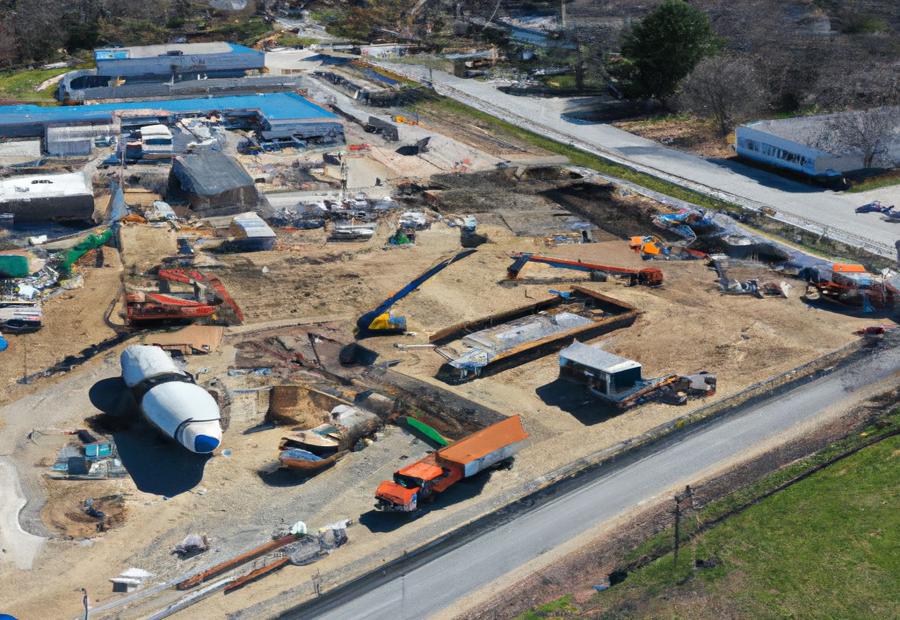


Photo Credits: Build-Wire.Com by Walter Smith
In conclusion, let’s recap the key steps to develop a successful supply strategy for your construction project and take a glimpse into future trends and innovations in construction supply strategies. Get ready to put your project on the right track with these essential insights!
Recap of Key Steps to Develop a Successful Supply Strategy
A prosperous supply strategy is imperative for construction projects. It makes sure that the correct materials and equipment are gained in the necessary amounts and quality. The strategy entails assessing project demands, evaluating suppliers and contractors, administering the supply chain process, reducing risks, utilizing technology, making sure of ongoing progress, and more.
To make a victorious supply strategy for a construction project, the following major steps can be followed:
- Spot materials and equipment needs: Begin by identifying the exact materials and equipment wanted for the project. This involves working out the quantity and quality needed to comply with project details.
- Investigate and pick trustworthy suppliers: Do complete research to find respected suppliers who can provide the required materials on time and at competitive prices. Take into account factors like their performance, trustworthiness, and capability to meet project deadlines.
- Construct enduring collaborations: Making solid associations with suppliers is essential for a successful supply strategy. Establishing long-term partnerships can aid guarantee persistent accessibility of materials and better pricing terms.
- Negotiate contracts and pricing: Join in negotiations with suppliers to get beneficial contract terms and pricing arrangements. This could comprise talking over volume discounts or long-term agreements to maximize costs.
- Create a thorough supply chain plan: Make an all-inclusive plan that states every step of the supply chain process, from procurement to delivery. This plan should include timelines, responsibilities, and backup measures in case of disruptions or delays.
- Execute efficient logistic and delivery systems: Set up productive logistics systems to simplify material handling and transportation processes. This includes optimizing storage solutions, scheduling deliveries according to project milestones, and using technology for real-time tracking.
It is important to remember that forming a successful supply strategy requires regular scrutiny, adaptation, risk mitigation measures, and technological improvements like digital inventory management solutions and software for communication and collaboration streamlining. Collecting data for performance assessment and examining past projects can also upgrade future strategies as part of continuous improvement efforts.
Future Trends and Innovations in Construction Supply Strategies
Construction supply strategies are constantly evolving. Tech-savvy solutions, efficient logistic systems, and risk mitigation are the future trends. Digital inventory management is now prevalent. Advanced software and tracking systems help monitor material and equipment needs, resulting in cost savings. Collaborative software tools let contractors, suppliers, and project teams exchange info, track progress, and resolve issues in real-time. Risk management is another trend. Plans are needed to minimize disruptions and KPIs help address unexpected outcomes. By staying informed and incorporating these trends, projects will benefit from increased efficiency and successful outcomes.
Some Facts About Formulating a Successful Supply Strategy for Your Construction Project:
- ✅ 93% of contractors have experienced rising construction costs due to supply chain issues. (Source: Dodge Data & Analytics)
- ✅ Construction supply chain management involves managing the flow of materials and relationships between various parties in the construction industry. (Source: Autodesk Construction Blog)
- ✅ Strategies to improve construction supply chain management include focusing on planning with accurate forecasts, choosing the right partners, and creating clear communication processes. (Source: Autodesk Construction Blog)
- ✅ Technology can play a crucial role in improving supply chain management in construction. (Source: Autodesk Construction Blog)
- ✅ Improving supply chain management in construction provides benefits such as more transparency, tighter cost control, and the ability to win more work. (Source: AXA XL)
FAQs about Formulating A Successful Supply Strategy For Your Construction Project
1. How can offsite manufacturing contribute to a successful supply strategy for a construction project?
Offsite manufacturing can improve supply chain efficiency by standardizing processes and products, reducing material waste, and increasing productivity. It allows for cost-effective production in controlled environments and enables just-in-time delivery to the construction site, minimizing on-site storage needs and reducing the risk of damage or loss during transportation. By incorporating offsite manufacturing into the supply strategy, construction projects can benefit from improved lead times, quality control, and overall project efficiency.
2. What are the benefits of knowledge sharing in construction supply chain management?
Knowledge sharing fosters collaboration and enables stakeholders to make informed decisions. By sharing information on supply chain risks, market trends, and best practices, construction professionals can develop effective strategies to mitigate potential issues and adapt to changing circumstances. Knowledge sharing also promotes innovation and continuous improvement within the industry.
3. How can supply chain professionals address safety issues in the construction supply chain?
Supply chain professionals can address safety issues by implementing comprehensive safety protocols and guidelines throughout the supply chain network. This includes ensuring proper handling and storage of materials, conducting regular inspections, and providing appropriate training for all personnel involved in the supply chain process. Additionally, fostering a culture of safety awareness and communication among all stakeholders is crucial in mitigating safety risks in the construction supply chain.
4. What actions can be taken to mitigate damage during transportation in the construction supply chain?
To mitigate damage during transportation, construction supply chain professionals can implement several measures. This includes using appropriate packaging materials and techniques to protect materials during transit, ensuring proper loading and securing of materials, and partnering with reliable transportation providers with a track record of safe and efficient delivery. Regular monitoring and tracking of shipments can also help identify and address any potential issues or delays during transportation.
5. How does decision-making play a role in formulating a successful supply strategy for a construction project?
Effective decision-making is crucial in formulating a successful supply strategy for a construction project. It involves evaluating and selecting the most suitable suppliers and contractors, considering factors such as cost, quality, lead times, and reliability. Decision-making also includes making informed choices about supply chain processes, resource allocation, and risk management strategies. By making well-informed decisions, construction projects can optimize their supply chain operations and improve project outcomes.
6. What are the current supply chain trends in the construction industry?
Some current supply chain trends in the construction industry include the adoption of cloud-based platforms for improved collaboration and data sharing, the integration of digital intelligence and analytics to enhance supply chain visibility and decision-making, and the implementation of lean and agile supply chain strategies to adapt to changing customer requirements and market dynamics. Other trends include the use of advanced technologies such as artificial intelligence, automation, and robotics in supply chain processes, as well as the increased focus on sustainability and ethical sourcing practices.
